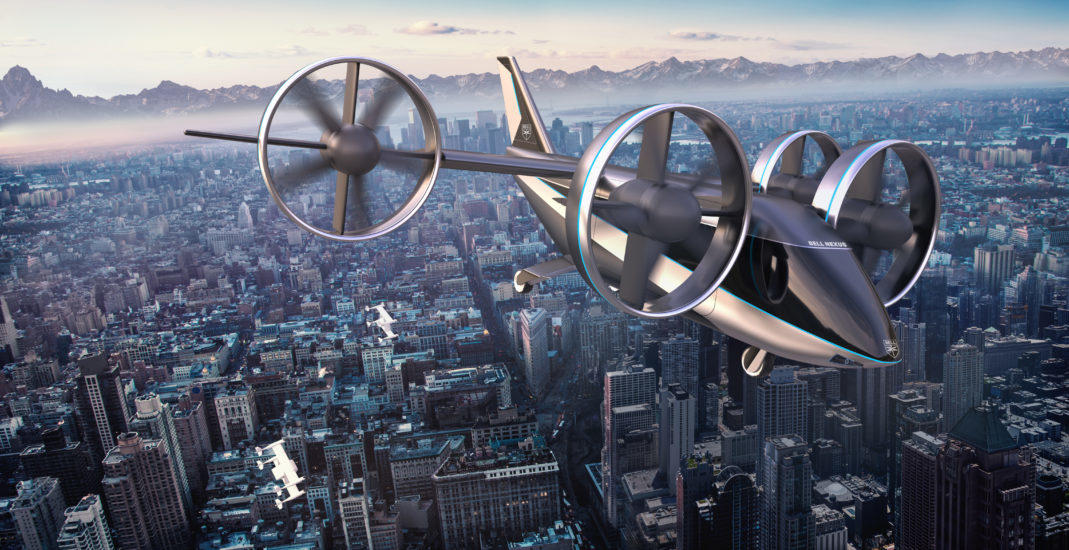Bell Unveils Its Nexus 4EX

At the 2020 Consumer Electronics Show (CES) in Las Vegas, helicopter manufacturer Bell revealed the latest version of its Nexus vertical take-off and landing (VTOL) vehicle, now called the Bell Nexus 4EX.
The original e-VTOL vehicle, unveiled at the 2019 CES, had six tilted ducted fans; this version, as the new name implies, has four. The E stands for Electric and the X for experimental.
The large ducted fans are for vertical and forward flight. The vehicle lifts off like a helicopter, flies like an airplane, and then lands like a helicopter.
The aircraft can be configured as an electric or hybrid-electric platform. The removal of two ducts results in a vehicle with less drag, making it more efficient.
Ducted fans also make less noise than a traditional helicopter.
“It’s a different tone of noise,” explained Bell Nexus Propulsion Lead Kyle Heironimus in a 2019 interview with Aviation Week. “So instead of the traditional helicopter sort of chop chop, it’s going to be more like a whoosh. And we think it will blend better into the sounds of the city.”
The Bell Nexus 4EX can carry five passengers up to 60 miles at a speed of up to 150 mph. The hybrid version would extend that range to 150 miles.
Autonomous from the Get-Go
The 4EX will initially carry four passengers with one pilot, even though it’s being designed as an autonomous VTOL. The pilot will be necessary in the beginning because it will help Bell obtain US Federal Aviation Administration (FAA) certification, according to Bell Vice President of Innovation Scott Drennan.
It will also be useful to have a pilot or “mission manager” onboard until the public becomes more comfortable with the concept of autonomous air taxis, Drennan said. After that, the vehicle will carry five passengers.
“We’re designing it autonomous from the get-go and then we’ll integrate in the pilot and the manned features,” Drennan explained at the 2019 Heli-Expo. “It’s an easier way to do it than starting with the manned features.”
Commercial certification of the Nexus is expected in the latter half of the 2020s, according to Drennan. Bell plans to use the aircraft for on-demand mobility for people in urban environments as well as cargo and data transport.


